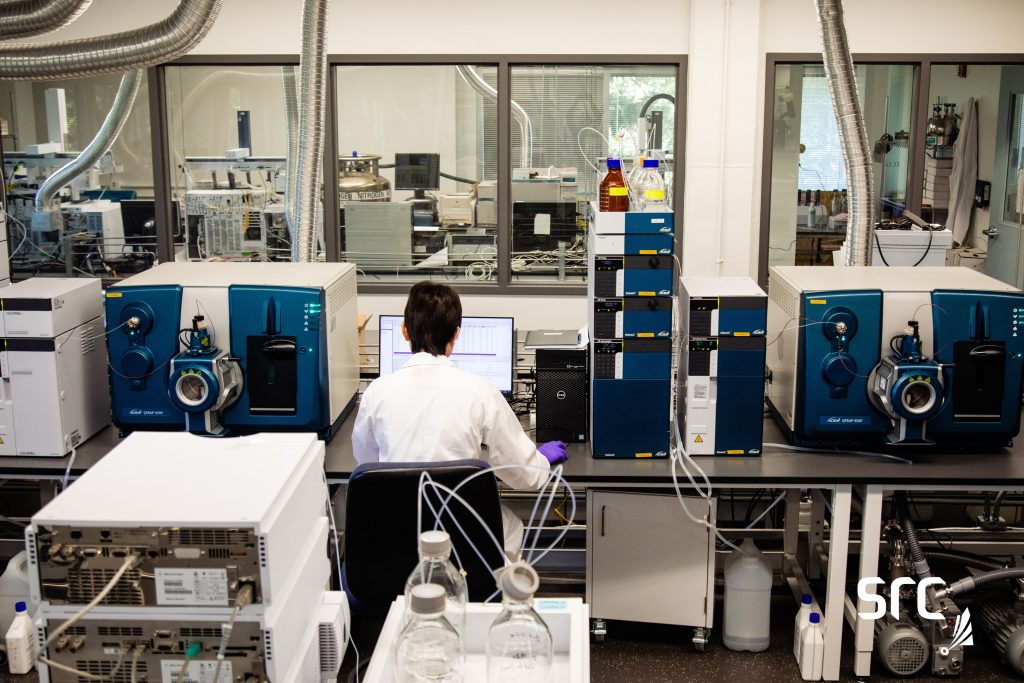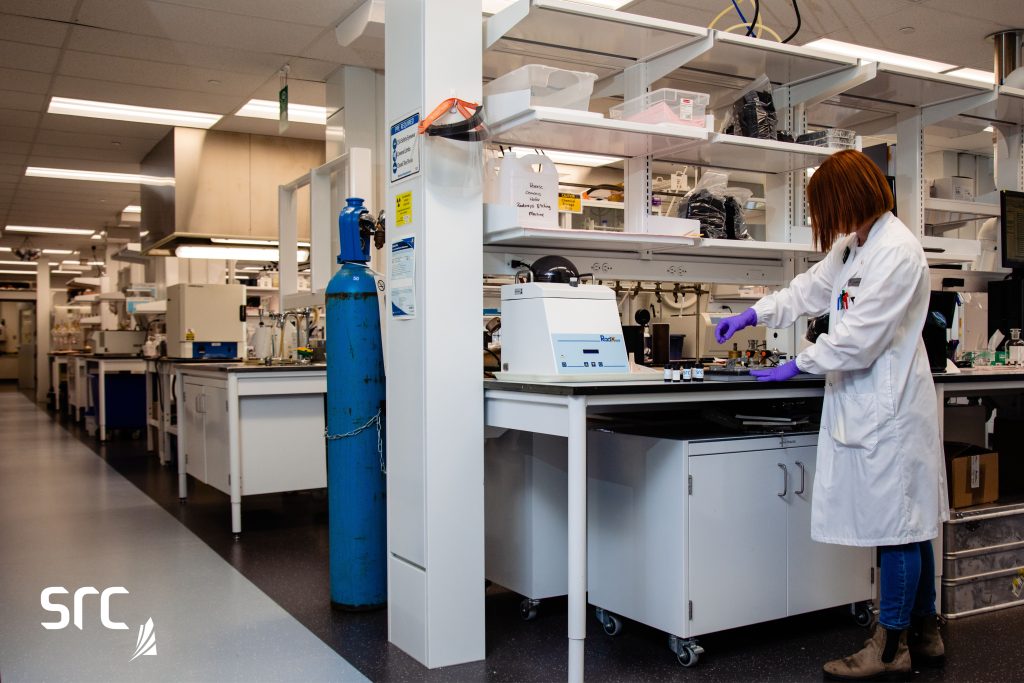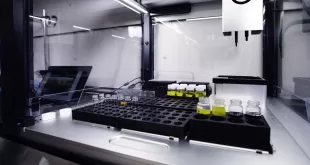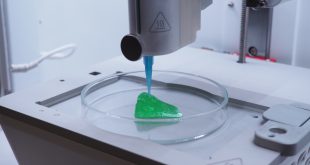The Saskatchewan Research Council IS helping industries solve technology problems, make improvements, and seize economic opportunities


By Sean Tarry
We’re currently living during extremely interesting times. Faced with a number of different challenges, yet equipped with a plethora of tools and resources to address and solve them, humankind has never before enjoyed such a wealth of capabilities and know-how. Aided in large part by the digitization of the world around us and the diligent work and research conducted by scientists and technicians in labs all across the globe, innovation and discovery abound. It’s a confluence of science and technology that’s fuelling much of our progress and development on the planet. And, it’s also one which, when leveraged properly, can yield economic opportunities as well.
Range of services and expertise
In order to help facilitate growth and fulfill the full economic potential of Saskatchewan—one of the country’s most resource-rich provinces—the Saskatchewan Research Council (SRC) connects science and industry, working with clients all over the world to support innovation and industrial commercialization. And, according to Jeff Zimmer, SRC’s Environmental Analytical Laboratories Manager, the Council is able to do this through a wide range of services and expertise.
“We offer a really diverse array of services that support the province of Saskatchewan in a number of important ways,” he explains. “Of note, we recently developed a Rare Earth Processing Facility to support the development of critical minerals in a green economy. We also happen to house the world’s largest diamond lab, a world-renowned Pipe Flow Technology Centre, as well as geo-analytical labs that support mineral exploration efforts. And, in our lab, which is the Environmental Analytical Lab, we provide a range of services to industry, mining firms, engineering and environmental consultants, municipalities, and more, in order to support environmental monitoring programs and processes, and to solve a variety of challenges that are faced.”
A diverse organization
Founded in 1947, the SRC has grown through the years from just three employees during its earliest years to the more than 350 employees that contribute toward the breadth and scope of work that it undertakes today. Working to support efforts within the agricultural and biotechnology, energy, environment, mining, and nuclear industries, the Council provides a multitude of services, ranging from air quality monitoring and mineral analysis to process development and water quality testing, and including dozens more in between. It’s an ecosystem of research and services that is as massive as it is impressive. And it’s one that Zimmer says provides those working at the SRC with continuous challenge, ensuring sustained innovation and creativity.
“As you realize when you look at the work that we do at the SRC, it’s an incredibly diverse organization,” he says. “And because we’re oriented around service, there are always a lot of new and unusual client challenges that we need to find solutions for. We’ve got a number of different facilities and so the opportunity for collaboration is ever-present. And, because we’ve got a number of people working here with varied backgrounds who bring different perspectives to the work we do, we’re never short of fresh ideas and new ways to solve problems and address challenges.”
Finding solutions to challenges
The services that it provides and people and facilities that support them makes the SRC Canada’s second largest research and technology organization. And, with one of Canada’s most complete analytical chemistry laboratories, its Environmental Analytical Laboratories offers clients environmental test services and expertise in organics, inorganics and radiochemistry. And, within its own suite of services and analytical offering, Zimmer emphasizes that it’s all done with the goal of solving the plethora of environmental challenges that the SRC’s clients face.
“In the end, we’re primarily helping clients solve their environmental challenges by providing them with the data that they need to support key decisions and to answer some critical questions, like is this water safe to drink?” he says. “We also help to assess land for agricultural and industrial purposes, determining the impact of their operations on the environment. In order to answer these questions properly and accurately, some type of analysis is required, which includes a range of testing. We do a lot of routine monitoring which helps prevent environmental contamination from arising. And we’ll often be involved when there are spills and emergencies, too, providing analyses and results when they are needed immediately.”
Continued innovation
The SRC has also been instrumental in leading the decades-long clean up and remediation efforts of 37 abandoned uranium mine sites in the northern regions of the province by providing its expert analysis capabilities. It’s a management project that the team at SRC has been involved in since 2006, leveraging the evolution of its technologies and techniques through the years. It’s an evolution that’s critical to the work that the SRC and its Environmental Analytical Lab does, says the Lab’s Supervisor, Tim Tse, who goes on to explain that it’s also a necessary evolution, spurring on continued innovation.
“Some of our clients have interest in monitoring for an invasive species that are currently an issue in Quebec and Manitoba,” he explains. “They’re concerned that the species is going to migrate into Saskatchewan. To address this challenge in a really unique way, we’re currently developing new environmental DNA techniques that will help enhance our capabilities. Essentially, we’re filtering water to extract environmental DNA in order to do some targeted analysis to find out whether or not the specie is present within Saskatchewan’s aquatic systems. It’s a technique that not only applies to invasive species, but can also be leveraged for community-level monitoring to help track and protect populations of exploited fish. We’re consistently looking ahead and developing newer and better techniques to add to, augment, and complement what we already offer.”
Embracing change
It’s the forward-looking, service-oriented approach that has helped cultivate the SRC’s reputation among its clients as a thorough, trustworthy, and hyper-capable organization that enables industry growth and economic development through its specialized offering. And, adds Zimmer, it does so while embracing the role it serves in improving the impact of its many clients.
“There’s so much change happening at the moment, which I think frightens a lot of organizations. But we really embrace change, working to find solutions for today’s challenges while keeping an eye on the horizon with respect to things that will ensure the future health of Saskatchewan and the rest of the planet. Within our lab, we’ll continue with the development of new tests and techniques while constantly improving the efficiency with which we do things, generating a consistent flow of new ideas.”
For more information about the Saskatchewan Research Council and the services it provides, visit www.src.sk.ca.
 BioLab Business Magazine Together, we reach farther into the Canadian Science community
BioLab Business Magazine Together, we reach farther into the Canadian Science community





